SML2381
APY29
≥97% (HPLC)
동의어(들):
APY 29, APY-29, APY29 (type I kinase inhibitor), N2-(1H-Benzo[d]imidazol-6-yl)-N4-(3-cyclopropyl-1H-pyrazol-5-yl)pyrimidine-2,4-diamine, N2-1H-Benzimidazol-6-yl-N4-(5-cyclopropyl-1H-pyrazol-3-yl)-2,4-pyrimidinediamine
로그인조직 및 계약 가격 보기
모든 사진(1)
About This Item
실험식(Hill 표기법):
C17H16N8
CAS Number:
Molecular Weight:
332.36
MDL number:
UNSPSC 코드:
12352200
NACRES:
NA.77
추천 제품
분석
≥97% (HPLC)
형태
powder
색상
white to beige
solubility
DMSO: 2 mg/mL, clear
저장 온도
−20°C
SMILES string
C1(NC2=CC(C3CC3)=NN2)=CC=NC(NC4=CC=C(N=CN5)C5=C4)=N1
InChI
1S/C17H16N8/c1-2-10(1)13-8-16(25-24-13)22-15-5-6-18-17(23-15)21-11-3-4-12-14(7-11)20-9-19-12/h3-10H,1-2H2,(H,19,20)(H3,18,21,22,23,24,25)
InChI key
WJNBSTLIALIIEW-UHFFFAOYSA-N
일반 설명
APY29 is considered as a type I kinase inhibitor of inositol requiring kinase enzyme 1 α (IRE1α).
생화학적/생리학적 작용
APY29 has the ability to enhance inositol requiring kinase enzyme 1 α (IRE1α) (P830L)′s oligomeric state to rescue RNase activity.
APY29 is a small molecule that inhibits the kinase activity of IRE1α (in vitro autophosphorylation IC50 = 280 nM) by targeting its active site ATP-binding pocket, while simultaneously acting as an allosteric activator of IRE1α RNase activity (EC50 = 460 nM) by keeping the active site in an open conformation. When applied 1 hr prior to stress induction by 4-hr 6 nM thapsigargin treatment, APY29 significantly potentiates stress-induced unfolded protein response (UPR) in rat insulinoma INS-1 cultures (XBP1 mRNA processing induction = 54% without vs. 78% with 1-hr 3 μM APY29 pretreatment).
Storage Class Code
11 - Combustible Solids
WGK
WGK 3
Flash Point (°F)
Not applicable
Flash Point (°C)
Not applicable
시험 성적서(COA)
제품의 로트/배치 번호를 입력하여 시험 성적서(COA)을 검색하십시오. 로트 및 배치 번호는 제품 라벨에 있는 ‘로트’ 또는 ‘배치’라는 용어 뒤에서 찾을 수 있습니다.
Allosteric inhibition of the IRE1alpha RNase preserves cell viability and function during endoplasmic reticulum stress
Ghosh R, et al.
Cell, 158(3), 534-548 (2014)
Alexei V Korennykh et al.
Nature, 457(7230), 687-693 (2008-12-17)
Aberrant folding of proteins in the endoplasmic reticulum activates the bifunctional transmembrane kinase/endoribonuclease Ire1. Ire1 excises an intron from HAC1 messenger RNA in yeasts and Xbp1 messenger RNA in metozoans encoding homologous transcription factors. This non-conventional mRNA splicing event initiates
Alexei V Korennykh et al.
BMC biology, 9, 47-47 (2011-07-07)
The unfolded protein response (UPR) controls the protein folding capacity of the endoplasmic reticulum (ER). Central to this signaling pathway is the ER-resident bifunctional transmembrane kinase/endoribonuclease Ire1. The endoribonuclease (RNase) domain of Ire1 initiates a non-conventional mRNA splicing reaction, leading
Rajarshi Ghosh et al.
Cell, 158(3), 534-548 (2014-07-16)
Depending on endoplasmic reticulum (ER) stress levels, the ER transmembrane multidomain protein IRE1α promotes either adaptation or apoptosis. Unfolded ER proteins cause IRE1α lumenal domain homo-oligomerization, inducing trans autophosphorylation that further drives homo-oligomerization of its cytosolic kinase/endoribonuclease (RNase) domains to
Likun Wang et al.
Nature chemical biology, 8(12), 982-989 (2012-10-23)
Under endoplasmic reticulum stress, unfolded protein accumulation leads to activation of the endoplasmic reticulum transmembrane kinase/endoRNase (RNase) IRE1α. IRE1α oligomerizes, autophosphorylates and initiates splicing of XBP1 mRNA, thus triggering the unfolded protein response (UPR). Here we show that IRE1α's kinase-controlled
자사의 과학자팀은 생명 과학, 재료 과학, 화학 합성, 크로마토그래피, 분석 및 기타 많은 영역을 포함한 모든 과학 분야에 경험이 있습니다..
고객지원팀으로 연락바랍니다.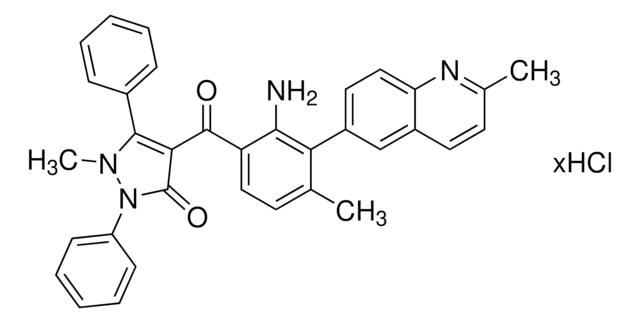
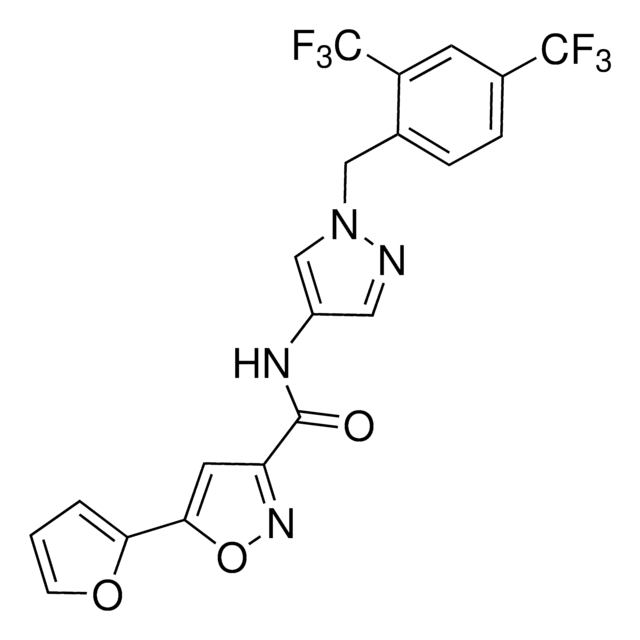


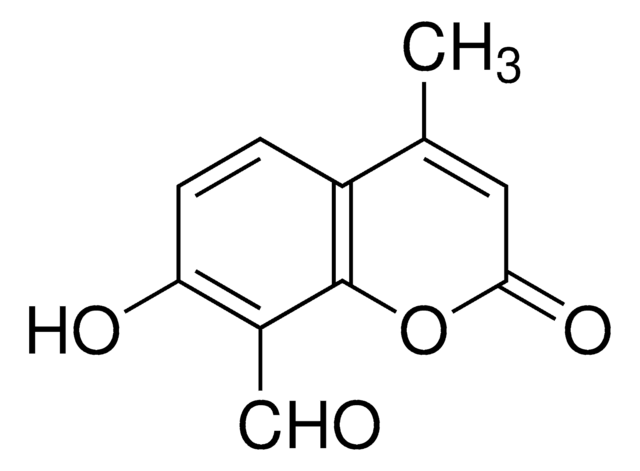
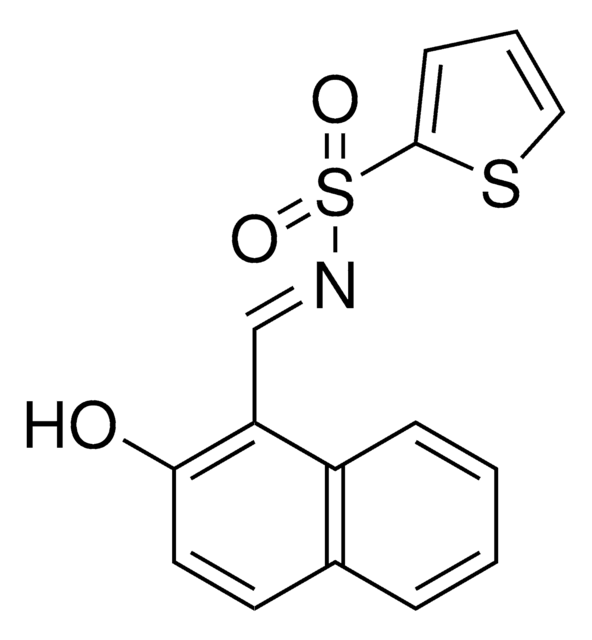
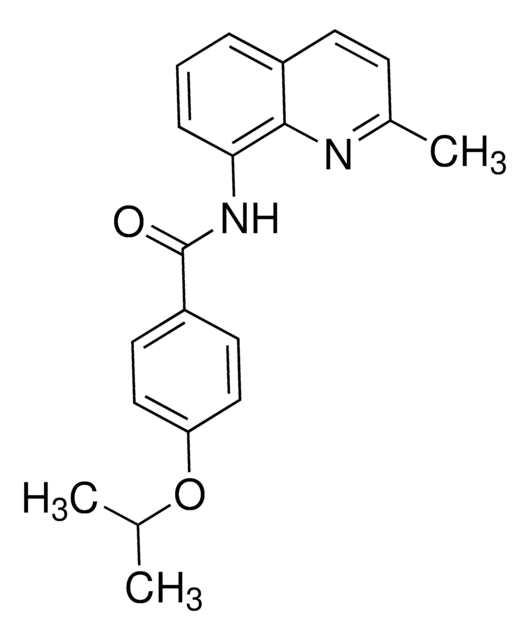

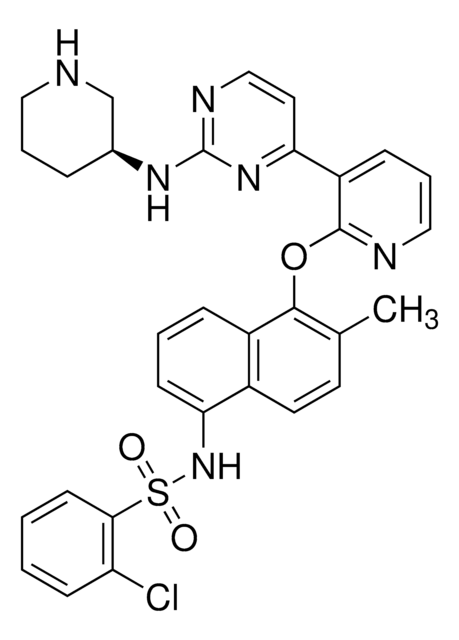
![PERK Inhibitor I, GSK2606414 GSK2606414 is a cell-permeable, highly potent inhibitor of EIF2AK3/PERK (IC₅₀ = 0.4 nM; [ATP] = 5 µM). Targets PERK in its inactive DFG conformation at the ATP-binding region.](/deepweb/assets/sigmaaldrich/product/structures/180/559/efa716dc-d5fe-4339-a6f0-0103084fc04a/640/efa716dc-d5fe-4339-a6f0-0103084fc04a.png)